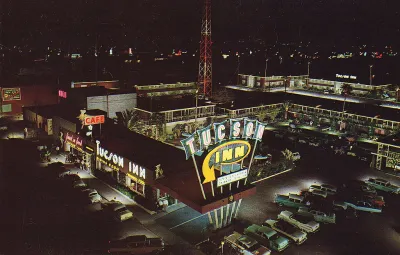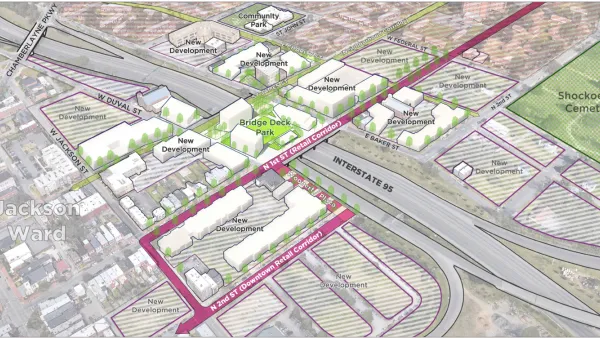After tremendous success with a streetcar line, the desert city is considering strategies for investing in its historic automobile corridor.

Four years ago, the Sunlink streetcar began running a route originating at the University of Tucson, along 4th Avenue, through downtown, and to the Mercado District. With its success came the kind of business and residential activity seen in other cities that have invested in transit, to the point where, four years later, formerly desolate areas are concerned.
Other areas of Tucson have not fared as well, namely what was once referred to as the Miracle Mile, a stretch of road on the north side of the city that once served as an "automobile gateway.
"With its Old Spanish Trail marketing, Tucson was one of the first cities to promote automobile-based tourism," Gideon Berger writes at CitiesSpeak. "As vehicle ownership skyrocketed in the 1920s, business catering to 'auto-camping' tourists flourished along corridors leading to the city. Eventually, these grew to include 'motor courts' with cabin lodging and some of the nation’s first motels."
Like similar areas in other American cities, the construction of an interstate highway—in this case I-10—Miracle Mile sent the neighborhood into decline.
After its recent success in redevelopment, Tucson won a land use fellowship from the Rose Center for Public Leadership and has revisited the Miracle Mile.
Berger, who is the director of the program for the Rose Center, enumerates a lengthy list of areas for which the fellowship developed recommendations, including both economic and cultural development and protecting residents from the kind of displacement that this sort of development can mean for those who live in it.
FULL STORY: Can Tucson, Arizona Bring Back its Miracle Mile?

Analysis: Cybertruck Fatality Rate Far Exceeds That of Ford Pinto
The Tesla Cybertruck was recalled seven times last year.

National Parks Layoffs Will Cause Communities to Lose Billions
Thousands of essential park workers were laid off this week, just before the busy spring break season.

Retro-silient?: America’s First “Eco-burb,” The Woodlands Turns 50
A master-planned community north of Houston offers lessons on green infrastructure and resilient design, but falls short of its founder’s lofty affordability and walkability goals.

Test News Post 1
This is a summary

Analysis: Cybertruck Fatality Rate Far Exceeds That of Ford Pinto
The Tesla Cybertruck was recalled seven times last year.

Test News Headline 46
Test for the image on the front page.
Urban Design for Planners 1: Software Tools
This six-course series explores essential urban design concepts using open source software and equips planners with the tools they need to participate fully in the urban design process.
Planning for Universal Design
Learn the tools for implementing Universal Design in planning regulations.
EMC Planning Group, Inc.
Planetizen
Planetizen
Mpact (formerly Rail~Volution)
Great Falls Development Authority, Inc.
HUDs Office of Policy Development and Research
NYU Wagner Graduate School of Public Service




























